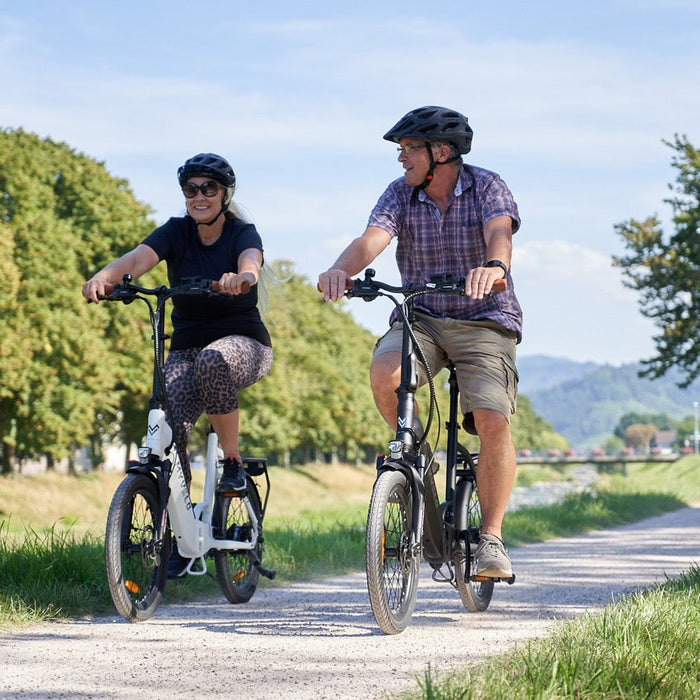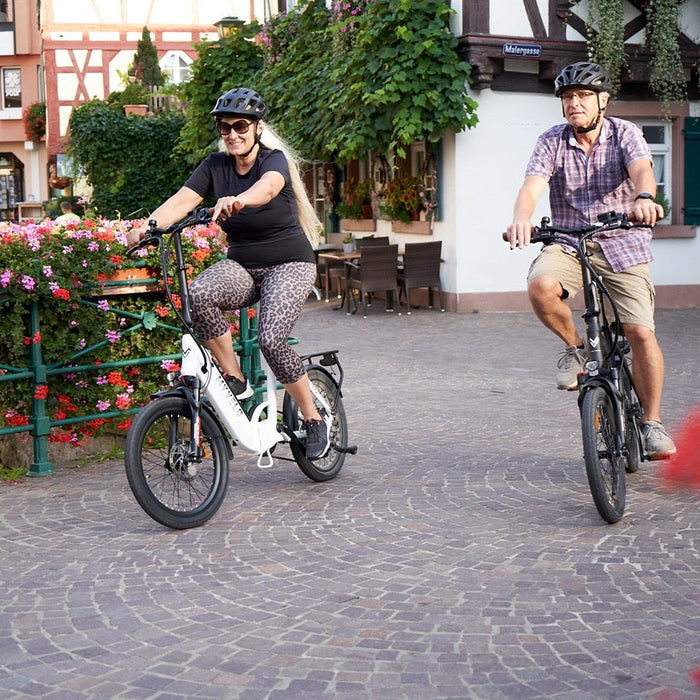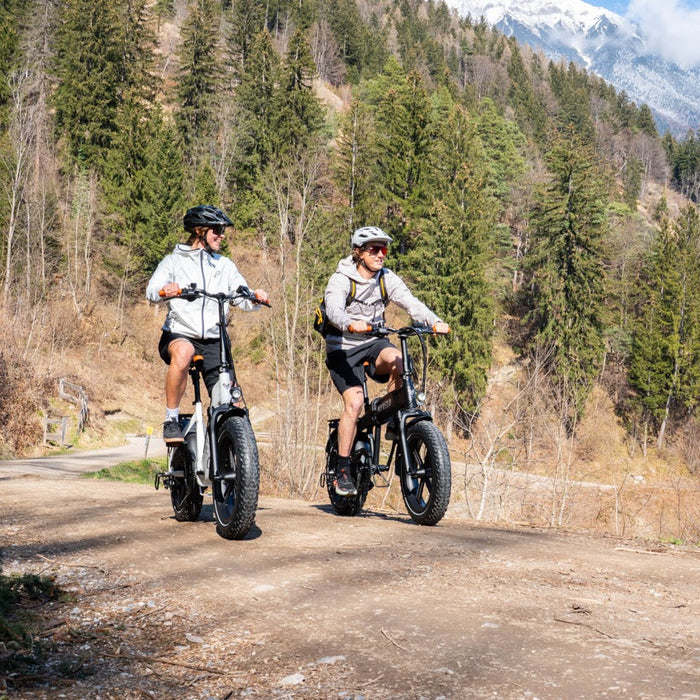
Makalu Equipped E-SUV
incl. FREE shipping & free returns

The disc brake is a type of braking system used particularly on bicycles, motorcycles, and many types of motor vehicles. It consists of a metal disc, or brake rotor, connected to the wheel hub and a brake pad that presses against this disc to slow or stop the wheel's rotation. Unlike rim brakes, which act on the outer edge of the rim, disc brakes allow for more consistent braking performance in a variety of conditions, such as wet, muddy, or at high downhill speeds. The efficiency and reliability of disc brakes have made them a popular choice for a wide range of bikes, from city and touring bikes to mountain bikes and road bikes.

Stress ist längst zur Volkskrankheit geworden – Dauerbelastung im Job, private Verpflichtungen und ständige Erreichbarkeit führen bei vielen Menschen zu einem Gefühl der Überforderung. Doch es gibt einen einfachen Weg, den Kopf freizubekommen: Radfahren. Ob gemütlich durch den Park oder sportlich auf dem Rennrad – das Fahrrad wirkt wie ein natürliches Ventil für Stress. Warum das so ist, zeigt dieser Artikel.

Der Kettenverschleiß ist bei E-Bikes ein noch wichtigeres Thema als bei klassischen Fahrrädern. Der leistungsstarke Motor unterstützt die Pedalkraft, wodurch eine höhere Belastung auf die Kette wirkt.

Der Eco Modus ist eine der wichtigsten Unterstützungsstufen eines E-Bikes und bietet eine ideale Balance zwischen Motorunterstützung und Energieeffizienz. Doch was genau bedeutet Eco Modus, wann sollte man ihn nutzen und welche Vorteile bringt er im Alltag? In diesem Artikel erfährst du alles Wichtige über diese smarte Fahrstufe.